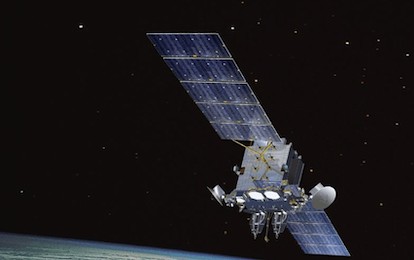Low earth orbit (LEO) satellites as an intermediary for communication became hot when Elon Musk announced Starlink (yeah, other options were available, but Elon Musk). This capability extends internet availability to remote areas and notably (for a while) to Ukraine in support of the war with Russia. Satellites can in principle provide line-of sight access anywhere, especially in areas lacking base stations (low population, mountainous, remote rural, etc). They even help in high latitude areas where access to geostationary satellites can be hampered by low-angle availability. 3GPP, the group of committees responsible for mobile communications standards, are now working on extending 5G to allow for communication through satellites, especially LEO and MEO (medium earth orbit) satellites. Thanks Elon, but we need competition to drive cost down and availability and service options up. The opportunity is significant, as are the challenges since this option isn’t just a simple extension to 5G.

Opportunity
While 75% or more of the US population lives in urban areas, only 55% of the worldwide population is urban. Nearly half the world likely does not live near a cellular base station, significantly limiting access to the internet and ability to make mobile phone calls. Even within the US or other western countries, our food production, cross-country shipping and at least 25% of the population have restricted access to those services. As any city dweller on a road trip quickly realizes.
In addition to Starlink, Amazon through their Kuiper project and T-mobile have active programs to support satellite-based communication. Market analysts estimate nearly a $30B market by 2030, with a CAGR of nearly 30%. That’s very tempting growth for operators, for infrastructure equipment makers and for handset makers if protocols can be standardized to drive growth and lower cost. Getting there will require not only extensions to 5G but also new hardware and software, as we’ll see next.
Challenges
Connecting through a satellite isn’t an incremental extension to terrestrial options. One problem is latency. Not simple there-and-back latency which for a LEO satellite runs maybe a few tens of milliseconds, not much worse than a ground-based cable link. One issue is handovers. LEO satellites orbit much closer to earth than say a geostationary satellite, which makes the coverage area much smaller for any given satellite at any given time. To maintain those orbits, LEO satellites must travel at high speed, requiring links be handed over quite frequently between satellites to maintain coverage with a ground-based device. Managing these handovers adds to latency.
Another challenge arises in managing Doppler shift in the link signal. LEO satellites travel at around 8km per second, fast enough to alter link frequencies noticeably and variably during the lifetime of a link to any given satellite. This problem isn’t a concern for terrestrial base stations traveling at 0km per second 😊
A third challenge is that the standard is not yet finalized. The 3GPP plan is aiming at support for up to tens to hundreds of Mbps bandwidth in the downlink and roundtrip delays down to a few tens of milliseconds. Those goals will require innovation in software for efficient handover management and in modems to manage the Doppler problem.
Who are you going to call?
The standard isn’t released, and production wireless solutions aren’t yet available, but that doesn’t mean you can’t start planning. This will be a competitive market demanding aggressive pricing for user equipment and for infrastructure. As usual, all components in the network must be very low power and these systems must remain compliant with baseline expectations for 5G and Open RAN. The days of dedicated phones for satellite access and proprietary solutions for large chunks of the network are far behind us.
Which makes CEVA an interesting company to talk to when planning your LEO satellite strategy. These guys have a track record for releasing solutions shortly after a standard is ratified. They already have well-proven cellular (and other wireless) IP solutions up to and including 5G, targeted to all aspects of mobile networks and UEs. Take a look at their Open RAN platform, and their 5G Modems platform for more details.
Share this post via:





Comments
There are no comments yet.
You must register or log in to view/post comments.